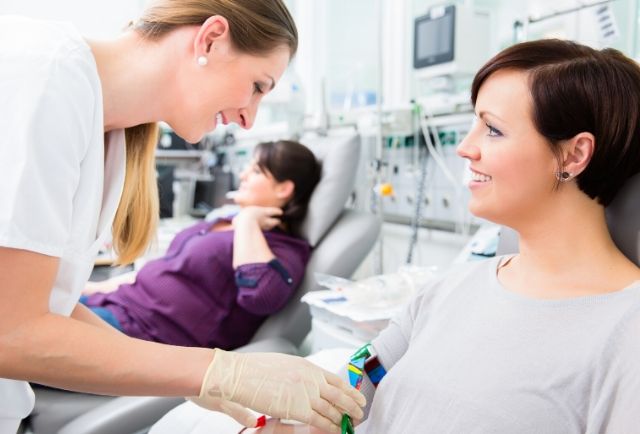Northeast Medical Institute - New Haven Campus Phlebotomy Course & Cna Class Fundamentals Explained
Northeast Medical Institute - New Haven Campus Phlebotomy Course & Cna Class Fundamentals Explained
Blog Article
Northeast Medical Institute - New Haven Campus Phlebotomy Course & Cna Class Things To Know Before You Buy
Table of ContentsIndicators on Northeast Medical Institute - New Haven Campus Phlebotomy Course & Cna Class You Need To Know3 Easy Facts About Northeast Medical Institute - New Haven Campus Phlebotomy Course & Cna Class ExplainedOur Northeast Medical Institute - New Haven Campus Phlebotomy Course & Cna Class IdeasThe Northeast Medical Institute - New Haven Campus Phlebotomy Course & Cna Class StatementsGet This Report about Northeast Medical Institute - New Haven Campus Phlebotomy Course & Cna ClassNot known Incorrect Statements About Northeast Medical Institute - New Haven Campus Phlebotomy Course & Cna Class
The usage of such gadgets ought to be accompanied by various other infection prevention and control practices, and training in their use.For setups with low resources, expense is a motoring aspect in procurement of safety-engineered gadgets. Where safety-engineered devices are not offered, competent usage of a needle and syringe is appropriate.
labelling); transport problems; analysis of results for scientific monitoring. In an outpatient division or clinic, provide a specialized phlebotomy workstation containing: a tidy surface with 2 chairs (one for the phlebotomist and the various other for the patient); a hand wash basin with soap, running water and paper towels; alcohol hand rub. In the blood-sampling space for an outpatient division or center, offer a comfy reclining sofa with an arm remainder.
Northeast Medical Institute - New Haven Campus Phlebotomy Course & Cna Class for Beginners
Guarantee that the signs for blood sampling are plainly specified, either in a written procedure or in recorded directions (e.g. in a lab form). Whatsoever times, comply with the techniques for infection avoidance and control provided in Table 2.2. Infection prevention and control methods. Collect all the devices required for the treatment and location it within safe and very easy reach on a tray or trolley, guaranteeing that all the items are clearly visible.
Introduce yourself to the patient, and ask the patient to state their full name. Examine that the laboratory form matches the individual's identification (i.e. match the person's information with the research laboratory kind, to make certain precise identification).
Make the person comfy in a supine placement (preferably). Place a tidy paper or towel under the individual's arm. Review the examination to be executed (see Annex F) and obtain spoken authorization. The patient has a right to reject a test any time before the blood sampling, so it is essential to guarantee that the person has actually understood the procedure.
Get This Report about Northeast Medical Institute - New Haven Campus Phlebotomy Course & Cna Class
Expand the patient's arm and evaluate the antecubital fossa or forearm. Situate a blood vessel of a good dimension that is visible, straight and clear. The representation in Section 2.3, reveals typical placements of the vessels, however lots of variants are feasible. The median cubital vein lies in between muscle mass and is normally the most very easy to pierce.
DO NOT insert the needle where blood vessels are diverting, due to the fact that this raises the opportunity of a haematoma. The vein ought to be visible without using the tourniquet. Finding the vein will certainly aid in establishing the correct size of needle. Use the tourniquet concerning 45 finger widths above the venepuncture website and re-examine the vein.
Haemolysis, contamination and existence of intravenous liquid and medicine can all change the outcomes (39. Nursing personnel and doctors may access central venous lines for specimens adhering to protocols. However, specimens from main lines carry a risk of contamination or erroneous laboratory examination outcomes (https://northeast-medical-institute.jimdosite.com). It is appropriate, yet not optimal, to injure specimens when initial presenting an in-dwelling venous device, before attaching the cannula to the intravenous liquids.
Excitement About Northeast Medical Institute - New Haven Campus Phlebotomy Course & Cna Class
Allow the location to completely dry. linked here Failing to permit enough call time raises the threat of contamination. DO NOT touch the cleansed website; specifically, DO NOT position a finger over the capillary to lead the shaft of the subjected needle. It the website is touched, repeat the sanitation. Carry out venepuncture as adheres to.
Ask the person to create a clenched fist so the capillaries are a lot more prominent. Get in the blood vessel promptly at a 30 level angle or much less, and proceed to introduce the needle along the vein at the simplest angle of entrance - PCT Classes. As soon as enough blood has been collected, launch the tourniquet BEFORE withdrawing the needle
The Best Strategy To Use For Northeast Medical Institute - New Haven Campus Phlebotomy Course & Cna Class
Take out the needle carefully and use mild pressure to the site with a tidy gauze or dry cotton-wool round. Ask the individual to hold the gauze or cotton woollen in place, with the arm extended and raised. Ask the individual NOT to bend the arm, due to the fact that doing so triggers a haematoma.

Some Known Details About Northeast Medical Institute - New Haven Campus Phlebotomy Course & Cna Class
Where feasible, maintain the tubes in a shelf and relocate the shelf in the direction of you - https://dzone.com/users/5164574/northeastmed.html. If the example tube does not have a rubber stopper, infuse very slowly into the tube as reducing the stress and speed utilized to transfer the sampling minimizes the threat of haemolysis.

Report this page